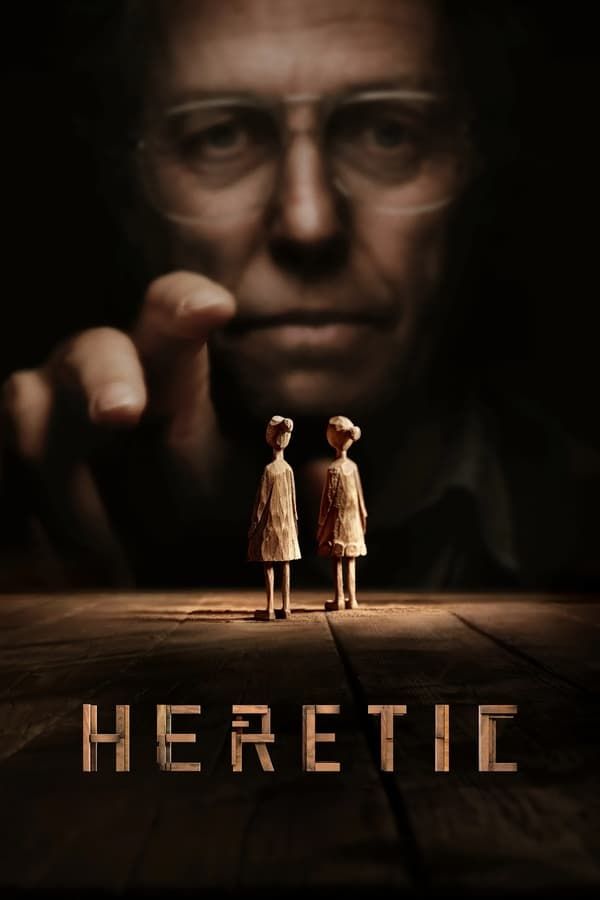Warning: Contains SPOILERS for Heretic!
Barnes and Paxton make a surprising choice when faced with the test of the belief doors in Heretic, and here is why each character chooses what they choose. Throughout Heretic‘s story, Sister Barnes and Sister Paxton are faced with a variety of torturous tests while in the house of Mr. Reed, with his sick and twisted games attempting to highlight truths about their faith in the Church of Jesus Christ of Latter-day Saints. However, the two protagonists of Heretic quickly begin to disagree about their approaches to Mr. Reed’s tests, with their choice of door saying a lot about them.
2024’s Heretic is one of the most interesting thrillers of the year, with directors Scott Beck and Bryan Woods crafting an exciting horror movie that tackles the themes of faith and religion head-on. The film follows two Mormons who go to the house of a man named Mr. Reed in an attempt to win him over to their religion. However, the two missionaries quickly realize that things aren’t as they seem, with Mr. Reed’s house being full of traps and tests that are designed to highlight certain truths about their faith and the history of their religion.
Paxton Chooses The Disbelief Door To Try To Please Mr. Reed
Even Though She Still Believes In Her Religion
At one point, Sister Barnes and Sister Paxton are trapped in a fake chapel designed by Mr. Reed. In order to get out, Mr. Reed explains that they must exit through the back of his house. Two doors sit at the back of the chapel, with Reed using a piece of chalk to write the word “belief” on one and “disbelief” on the other. Reed explains that they both lead to the same place, but that they must choose which door they want to go through in accordance with their faiths. Interestingly, the friends choose different doors, with Sister Paxton choosing the disbelief door.
Related
Topher Grace’s Heretic Cameo Explained
Topher Grace has made a number of unexpected movie cameos in recent years, and he’s hardly recognizable in the psychological horror Heretic.
By choosing the door named disbelief, Sister Paxton is not attempting to renounce her faith. After all, apostasy is one of the worst sins that Paxton could do, as is explained earlier in the film. However, Sister Paxton is trying to appeal to Mr. Reed, lying about her faith in order to try and escape. Since Sister Paxton believes that Mr. Reed is anti-religion, she hopes that saying that she doesn’t believe in her religion will please him. Despite her hopes that she will be let go, Mr. Reed doesn’t grant her wish, with Sister Barnes picking a different option.
Barnes Chooses The Belief Door To Stand Up To Mr. Reed
Showing Her Confidence In Her Faith
When faced with the test of the two doors, Sister Barnes makes the opposite choice of her friend, with Barnes deciding to choose the door that is labeled belief. Throughout Heretic up to this point, Sister Barnes is shown to be, of the two, the one who is far more confident in her religion and faith. So, while Sister Barnes understands Sister Paxton’s plan, she decides to go against this and pick the belief door. Since Mr. Reed had said that he appreciates and sees the value of religion, Barnes’ choice is an attempt to stand up to him.
Sister Barnes also chooses the belief door so that she doesn’t have to be an apostate, with her not renouncing her faith in Mormonism despite the danger that it could put her in. When the sisters eventually travel through the doors, they discover that they do lead to the same place, making Mr. Reed’s test of their faith all the more confusing.
Paxton & Barnes’ Door Decision Sums Up Heretic’s Main Themes
Their Choices Don’t Really Matter
Sister Paxton and Sister Barnes’ decisions during the test of the two doors manage to perfectly sum up Heretic‘s main themes, acting as a beacon in the middle of the film’s complex religious commentary. The film is all about how belief and disbelief shape what people do, and how people sometimes lie about what they do or do not believe in order to conform. As Hugh Grant’s Mr. Reed points out, both sisters proclaim that they believe that his wife is there, even though all available evidence suggests that she doesn’t exist.
Related
Why Heretic’s Reviews Are So Positive: 94% Rotten Tomatoes Score Explained
The new horror movie Heretic shows a completely different side of lead actor Hugh Grant, and is one of the best horror films of the year.
On top of that, the fact that the doors lead to the same location says something else about religion. Mr. Reed’s test is meant to illustrate that, no matter how much we believe or do not believe in something, our belief has no effect on empirical reality. If a god does not exist, it doesn’t exist whether you believe it does or doesn’t exist. If a god does exist, it exists whether you believe it does or doesn’t exist. Despite being sadistic, Mr. Reed’s tests all have a point, making his villainous plan in Heretic incredibly interesting.

